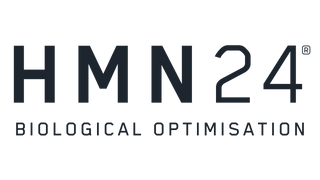In today’s world of supplements and biohacks, complexity is king.
We’re offered DNA tests to guide our diets, microbiome kits to interpret our gut, and 50-ingredient blends to "cover all bases."
But amidst the noise, we've lost sight of one of the most foundational elements of human health:
The Circadian Rhythm.
Your body’s internal clock doesn’t just control your sleep, it orchestrates metabolism, hormone regulation, immune function, and even how you digest and absorb nutrients.
Yet, most of what we call health optimisation today is misaligned with this rhythm.
We focus on what to take, but we never ask when.
And that’s where the current system is falling apart.
Here’s What the Science Tells Us:
Timing is Everything:
Nutrient metabolism follows a circadian rhythm. Your body processes food, supplements, and even hydration differently depending on the time of day.
Ignore the clock, and you risk undermining the effect of even the most “targeted” nutrition.
(Lopez et al., 2021; Panda, 2016)
Gut Health is Rhythmic:
Your gut microbiome isn’t static, it oscillates daily, changing in both composition and function depending on your feeding schedule and sleep-wake cycle.
Disrupt these rhythms, and you could be triggering inflammation, metabolic dysfunction, and even mood imbalances.
(Deaver et al., 2018; Daas & Roos, 2021)
Mental and Metabolic Health Depend on Rhythm:
The same clock that controls your digestion also influences your brain, metabolism, and immune system.
Chronic disruption is linked to metabolic syndrome, gut dysbiosis, and mental health issues.
(Codoñer‐Franch et al., 2023; Fagiani et al., 2022)
The Problem With Today’s Supplement Culture:
We’re trying to patch problems reactively without rhythm.
We take supplements at random times or when we’re triggered by tiredness or brain fog, ignore light exposure, sleep inconsistently, and eat without structure, then wonder why we don’t feel better.
It’s not just about what you take.
It’s about when you take it, how you live around it, and whether it aligns with your body’s natural systems.
The HMN24 System Was Built To Fix This
HMN24 isn’t just about ingredients, it’s about timing, alignment, and real physiological impact.
Here’s how we apply this science practically:
Morning: RISE
- Taken around an hour after our first light exposure and in the first third of your waking day, when cortisol and dopamine systems are naturally primed.
- Supports alertness, energy metabolism, and hydration, helping you align your mental and physical systems with your biological “day mode.”
- Ingredients like natural caffeine, citicoline, and L-theanine help enhance focus without overstimulation.
- Ingredients such as Pyridoxal 5-Phosphate (P5P) and Methylcobalamin — active forms of Vitamin B6 and B12, respectively, play crucial roles in neurological function, circadian health, and the body’s response to light exposure.
-
Designed to match your natural circadian activation curve.
Midday: FLOW
- Supports cognitive resilience, focus, and mood when your energy naturally dips and mental fatigue kicks in.
- Includes Lion’s Mane, NALT, CDP-Choline, and neuro-visual support with lutein and zeaxanthin.
- Best taken after your peak alertness phase, when the brain enters its secondary productivity window and our nervous system shifts modes. Often referred to as the afternoon slump or circadian trough. Flow is built to support parasympathetic activation.
Complements your body's rhythm, not overrides it.
Evening: PRE-SLEEP
- Built alongside FLOW for parasympathetic activation, the state your body needs to wind down and recover.
- Ingredients like Magnesium Glycinate, KSM-66 Ashwagandha, PEA, and L-Theanine support deep sleep architecture (REM + NREM) without reliance on melatonin. Also minimising fragmentation.
Aligns with your body’s natural production of melatonin and prepares your system for regenerative rest.
Define a Sleep and Wake Routine
Set a wake target that aligns with your work, family and lifestyle commitments then commit to being asleep 16 hours after that time.
Anchor your routine to light and time
Wake up at a consistent hour, get daylight exposure early, and dim lights 2 hours before bed. If your chosen wake-up time doesn’t align with sunrise, invest in biocentric bulbs or if you travel lots across time zones, invest in circadian glasses such as those by AYO.
Match supplements to your biological rhythm
Take energising formulas early, cognitive support midday, and recovery support before bed.
Structure meals and movement
Your gut microbes respond to when you eat, not just what you eat. Try to keep meals within a 10–12 hour window and maintain consistent feeding times as much as you can.
Avoid the “always-on” trap
Stimulants, late-night stimulus, and irregular routines break your rhythm. Use supplements that support balance, not overstimulation.
The future of health isn’t more complexity.
It’s better alignment.
With rhythm. With nature. With time.
HMN24 is more than a supplement system. It’s a circadian strategy.
Rooted in chronobiology. Built for real-world performance.
Designed to help you thrive, not just function.







